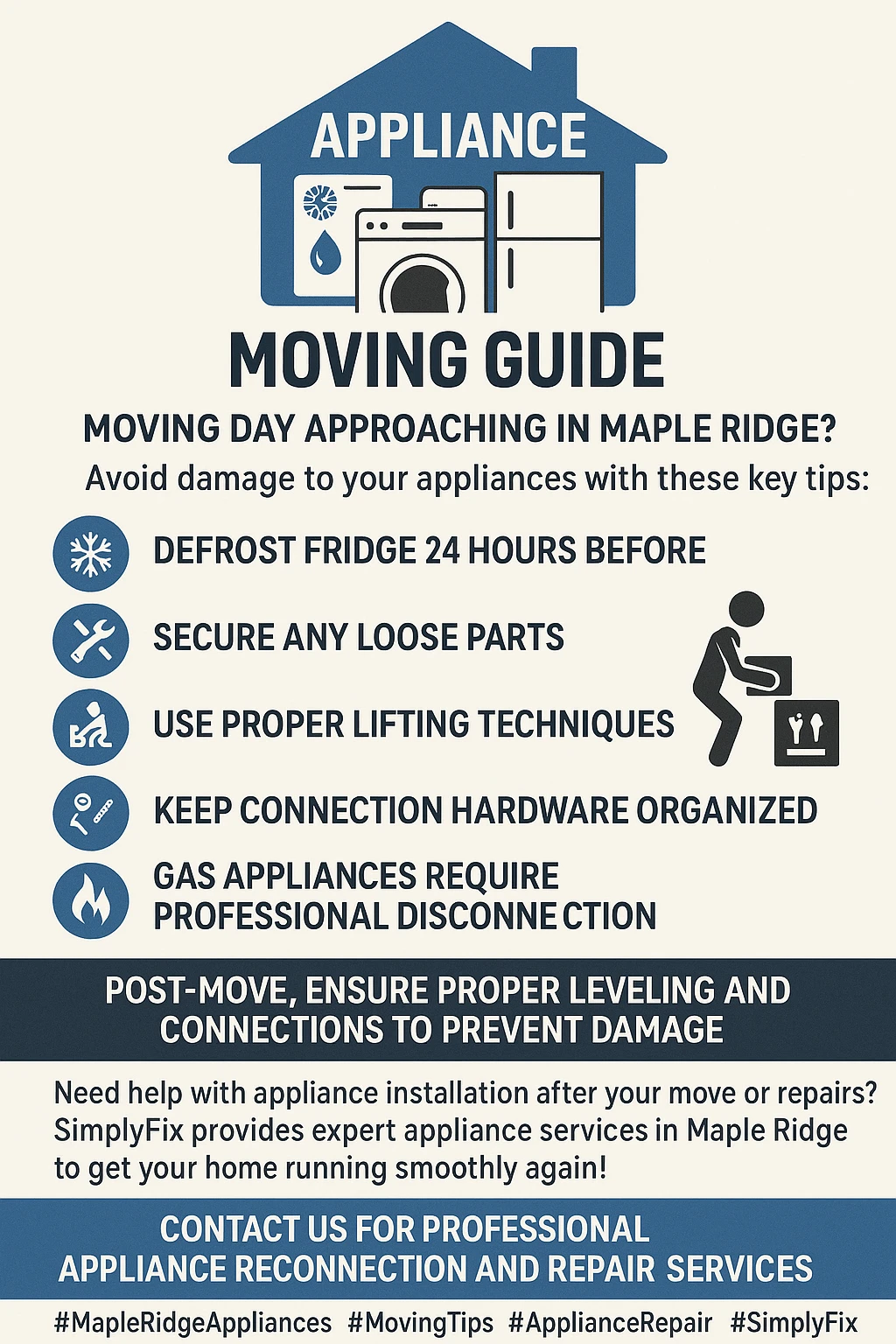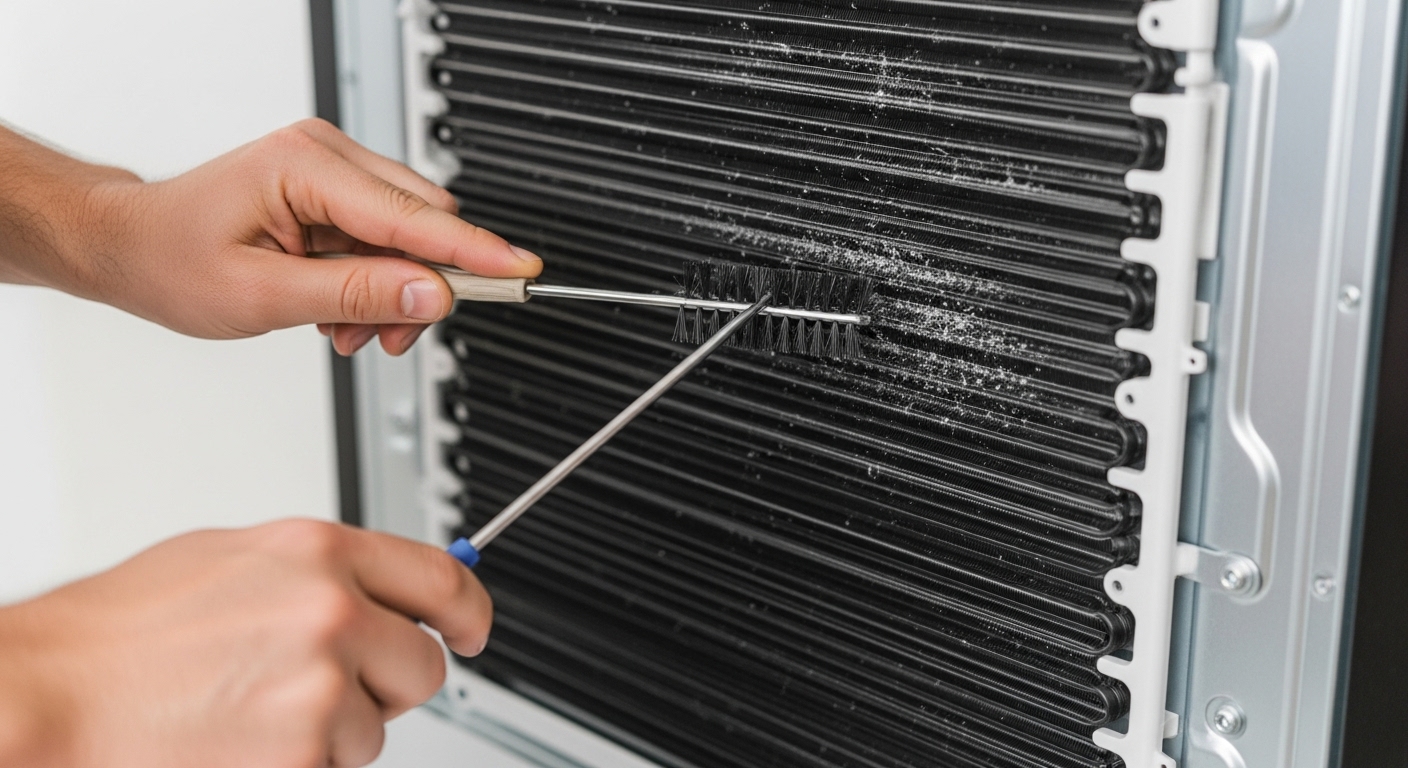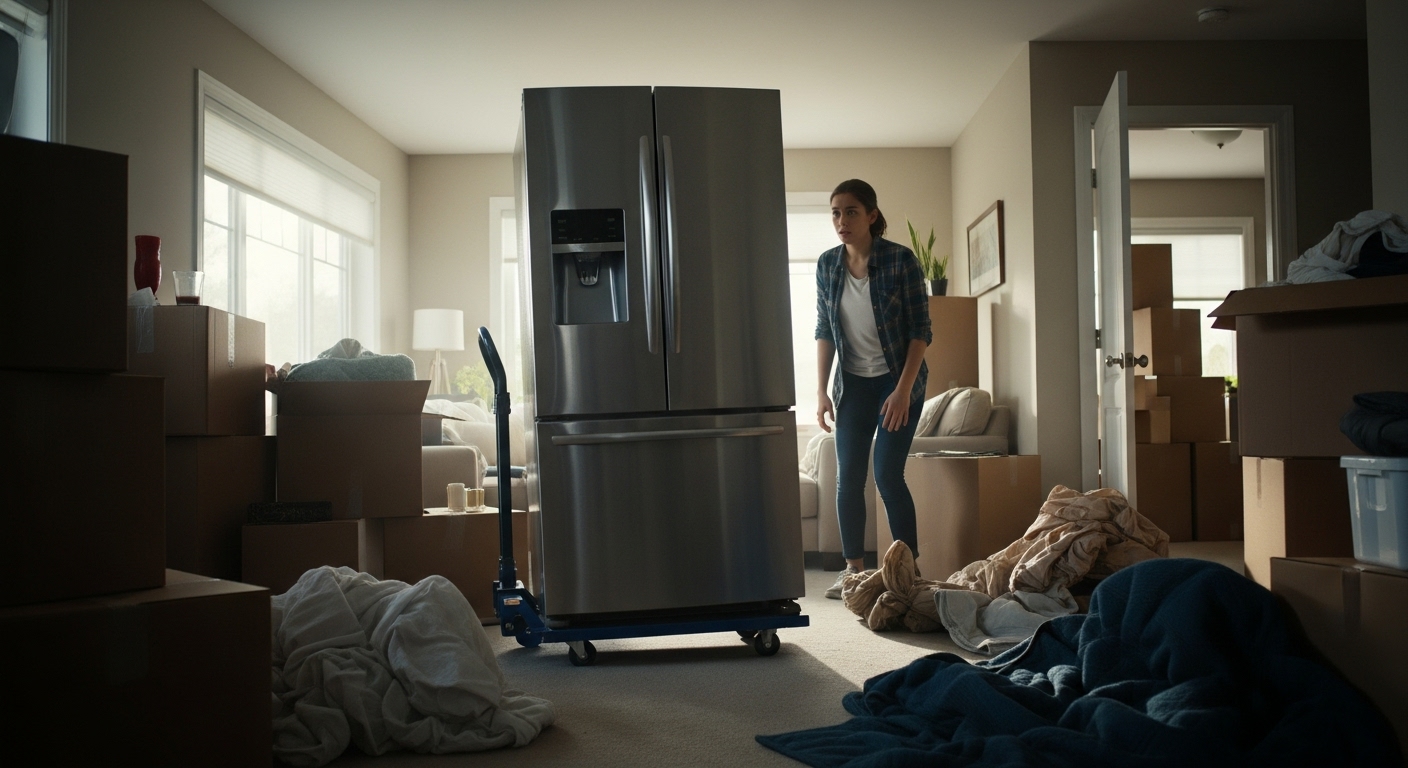Moving day stress got you frantically Googling “how not to destroy my expensive appliances”? We’ve got your back with this comprehensive guide that’ll turn you from a panicked appliance-owner into a moving-day maestro who actually knows what they’re doing!
Listen, I learned this lesson the hard way when I helped my best friend move last summer in Maple Ridge. We thought we could just unplug her fancy French-door fridge, tip it onto a dolly, and call it a day. Spoiler alert: that $3,000 refrigerator spent two weeks making weird gurgling noises before finally giving up entirely. Turns out, there’s a whole science to preparing appliances for moving that nobody talks about until it’s too late.
Moving appliances isn’t like packing up your book collection or wrapping your grandmother’s china. These heavy, complex machines have pumps, compressors, and delicate internal components that can turn into expensive paperweights if you don’t treat them right. Whether you’re relocating within Maple Ridge or moving across the country, your appliances need special attention, proper timing, and sometimes professional help to make the journey safely.
The good news? With the right preparation, you can move your appliances without breaking them, your back, or your budget. This guide covers everything from the 48-hour prep timeline for your fridge to knowing when it’s time to call in the pros. We’ll walk through each appliance type, share insider tips from local Maple Ridge moving experts, and help you avoid the costly mistakes that catch most homeowners off-guard.
Key Outtakes
- Start appliance preparation 24-48 hours before moving day to ensure proper defrosting and complete drying of all components
- Professional disconnection services prevent safety hazards and costly damage, especially for gas appliances requiring certified technician handling
- Essential moving equipment includes heavy-duty dollies with straps, furniture sliders, and protective blankets designed for appliance transport
- Each appliance type requires specific preparation procedures, from transit bolts for washers to upright transport positioning for refrigerators
- Local Maple Ridge appliance services provide integrated preparation, moving, and reconnection support with knowledge of regional building codes

Understanding the Timeline and Planning Requirements
The biggest mistake I see homeowners make is treating appliance moving like a last-minute task. Trust me, your refrigerator doesn’t care that you’re exhausted from packing boxes all week – if you don’t give it proper prep time, it’ll make you pay for it later. The key to successful appliance moving starts with understanding that different appliances have different timeline requirements, and some of them are absolutely non-negotiable.
Your refrigerator and freezer need the most advance notice, requiring 24 to 48 hours for proper defrosting before they’re ready to move. This isn’t just about melting ice – it’s about allowing the internal components to reach room temperature and ensuring no moisture remains trapped inside. Meanwhile, your dishwasher should stop being used several days before moving day to allow complete drying of the internal mechanisms and prevent mold growth during transport.
Here’s where living in Maple Ridge adds an extra layer of consideration: many of the older homes in our area have narrower doorways and hallways than modern construction standards. I can’t tell you how many times I’ve seen moving day turn into a disaster because someone assumed their side-by-side refrigerator would fit through a 1950s doorway. Take measurements of all doorways, hallways, stairwells, and any tight corners between your appliances’ current location and the moving truck.

While you’re measuring pathways, also verify the requirements at your new home. Check power outlet locations, gas line connections, and water supply access. Nothing’s worse than discovering your new kitchen doesn’t have a 240V outlet for your electric dryer after you’ve already moved in. Create a room-by-room appliance inventory that includes model numbers, dimensions, and specific moving requirements – this becomes invaluable when coordinating with moving companies or rental truck sizes.
Don’t forget to gather all your essential moving supplies well before moving day. Heavy-duty appliance dollies with securing straps, furniture sliders (plastic for carpet, felt for hardwood), and thick moving blankets aren’t the kind of things you can just grab at any corner store. Local Maple Ridge hardware stores and moving supply companies can help you source quality equipment, but popular items often sell out during busy moving seasons, especially summer months.
Mastering Refrigerator and Freezer Preparation
Now that you understand the timeline, let’s dive into the appliance that causes the most headaches: your refrigerator. These aren’t just big boxes that keep things cold – they’re complex machines with compressors, refrigerant lines, and delicate sealed systems that absolutely hate being jostled around. The preparation process might seem excessive, but every step serves a crucial purpose in protecting your investment.
The defrosting process begins 24 to 48 hours before moving day by turning your refrigerator to the “Off” position and unplugging it from the wall. This gives the evaporator coils time to completely defrost and prevents water from sloshing around inside during transport. Remove absolutely everything from both the refrigerator and freezer compartments – and I mean everything, including that mysterious container of leftovers you’ve been avoiding. Use this as an opportunity to clean the interior thoroughly with mild soap and water, then leave the doors propped open to allow complete air drying.
While the interior is drying, tackle the exterior components that most people forget about. The condenser coils, usually located on the back or underneath the refrigerator, collect dust and debris that can affect performance. Use a vacuum or coil brush to clean these thoroughly before moving. If your refrigerator has an evaporator pan (the tray that collects condensation), remove it, empty any water, and clean it separately. These small details prevent unpleasant odors and potential water damage during transport.

Component removal is where attention to detail really pays off. Take out all removable shelves, drawers, crisper bins, and door compartments. These items should be cleaned, dried completely, and packed separately in clearly labeled boxes with plenty of padding. Don’t leave anything loose inside the refrigerator – even a single ice cube tray bouncing around can crack interior walls or damage the evaporator coils. If your refrigerator has an ice maker or water dispenser, you’ll need to disconnect the water line, which often requires shutting off the water supply valve and carefully removing the connection.
Transportation positioning is absolutely critical for refrigerators, and this is where many DIY moves go wrong. Refrigerators must be kept upright during transport to prevent compressor oil from flowing into the refrigerant lines. French-door models and bottom-freezer units are especially sensitive and can suffer permanent damage if tilted beyond 45 degrees. If you absolutely must tilt a refrigerator to navigate stairs or doorways, minimize the time and angle, then allow extra settling time before plugging it in at your new location.
Here’s a tip specific to Maple Ridge’s climate: after moving your refrigerator to its new location, resist the urge to plug it in immediately. Allow it to sit upright and undisturbed for at least 24 hours before connecting power. Our area’s temperature fluctuations, especially during spring and fall moving seasons, can affect the internal components’ adjustment period. This settling time allows compressor oil to return to its proper location and prevents potential startup damage that could void your warranty.
Washing Machine and Dryer Moving Essentials
If refrigerators are the divas of appliance moving, washing machines are the heavy-lifting athletes that require a completely different approach. These machines are built to handle tons of water and vigorous agitation cycles, but that same robust construction makes them incredibly heavy and mechanically complex to move safely. The key to successful washer and dryer relocation lies in understanding their internal mechanisms and preparing them properly for transport.

Water line disconnection is your first priority, and it’s more involved than simply unplugging a power cord. Start by shutting off both hot and cold water supply valves, usually located behind the machine or in a nearby utility room. Use towels or a bucket to catch any residual water as you disconnect the supply hoses from the back of the machine. Here’s a pro tip I learne

Recent Comments